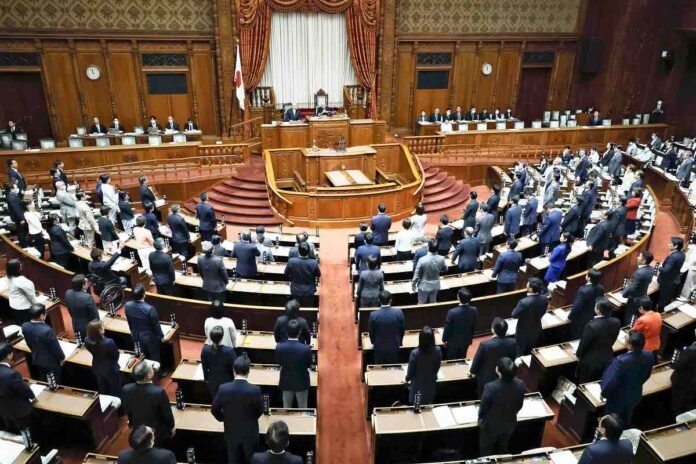The House of Councilors will vote on Friday to establish a joint command center for the Self-Defense Forces.
16:34 JST, May 11, 2024
The House of Councilors on Friday passed a legislative package to create a joint operations command center for the Self-Defense Forces.
The package was approved by the Liberal Democratic Party, Komeito, the Constitutional Democratic Party of Japan, Nippon Ishin (Japan Innovation Party) and the People’s Democratic Party, passing it into law. It includes a revision of the Self-Defense Forces Law.
The new headquarters will jointly command the ground, sea and air self-defense forces even in peacetime. This is intended to reduce the workload of the Chief of the Joint Staff, the SDF’s highest-ranking uniformed officer, and to improve cooperation with the US Armed Forces.
The headquarters will be opened at the Ministry of Defense headquarters in Ichigaya District of Shinjuku Ward, Tokyo, with 240 personnel by the end of this fiscal year.
The joint operations commander, who will lead the new center, will be an SDF officer of the same rank as a general in the Ground and Air Self-Defense Forces or a vice admiral in the Maritime Self-Defense Force.
The joint commander will lead the Ground Component Command, the Self-Defense Fleet, the Air Defense Command, the SDF Cyber Defense Command and the Space Operations Group.
Currently, the Chief of the Joint Staff coordinates SDF operations and advises the Prime Minister and the Minister of Defense. After the new command center has been set up, the chief of the Joint Staff will focus on advising the ministers.
Japan and the US will revise frameworks
The Japanese and US governments will accelerate work towards revising command and control frameworks, with the aim of boosting cooperation between their armed forces.
As early as this summer, Japan and the United States will hold “two-plus-two” security talks, with minister-level officials working out the details.
Currently, the SDF Chief of Joint Staff plays two roles at once. They are the equivalent of the chairman of the US Joint Chiefs of Staff in terms of strategy, and of the commander of US Indo-Pacific Command in terms of joint operations.
After the new SDF headquarters was launched, the joint commander there would take over coordination with the Indo-Pacific Command.
“We will be able to centralize cooperation, both for information sharing and operations, with the command centers of our allies,” Defense Minister Minoru Kihara said at a news conference on Friday.
During a Japan-US summit in April, the two sides agreed to review the command and control frameworks for the SDF and US forces. The U.S. military also aims to accelerate organizational changes for its forces in Japan.
The U.S. Department of Defense plans to draw up a reform plan based on input from the Indo-Pacific Command, which controls U.S. forces in Japan. Several ideas have been floated, including strengthening the authority of U.S. Armed Forces Headquarters in Japan and establishing a new joint unit in Japan. But progress has proven difficult, and some experts expect a concrete plan will take time.



